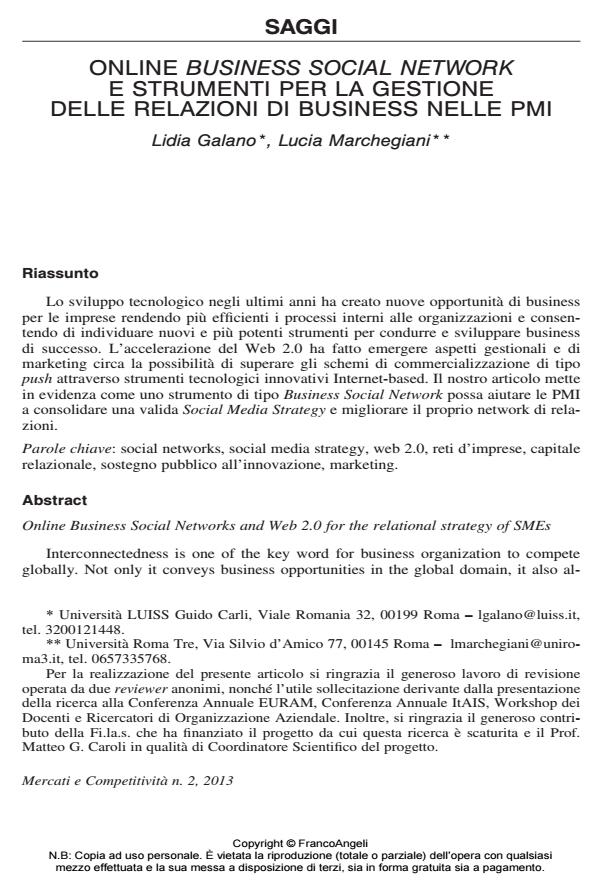Online business social network e strumenti per la gestione delle relazioni di business nelle PMI
Titolo Rivista MERCATI & COMPETITIVITÀ
Autori/Curatori Lidia Galano, Lucia Marchegiani
Anno di pubblicazione 2013 Fascicolo 2013/2
Lingua Italiano Numero pagine 24 P. 59-82 Dimensione file 814 KB
DOI 10.3280/MC2013-002004
Il DOI è il codice a barre della proprietà intellettuale: per saperne di più
clicca qui
Qui sotto puoi vedere in anteprima la prima pagina di questo articolo.
Se questo articolo ti interessa, lo puoi acquistare (e scaricare in formato pdf) seguendo le facili indicazioni per acquistare il download credit. Acquista Download Credits per scaricare questo Articolo in formato PDF

FrancoAngeli è membro della Publishers International Linking Association, Inc (PILA)associazione indipendente e non profit per facilitare (attraverso i servizi tecnologici implementati da CrossRef.org) l’accesso degli studiosi ai contenuti digitali nelle pubblicazioni professionali e scientifiche
Lo sviluppo tecnologico negli ultimi anni ha creato nuove opportunità di business per le imprese rendendo più efficienti i processi interni alle organizzazioni e consentendo di individuare nuovi e più potenti strumenti per condurre e sviluppare business di successo. L’accelerazione del Web 2.0 ha fatto emergere aspetti gestionali e di marketing circa la possibilità di superare gli schemi di commercializzazione di tipo push attraverso strumenti tecnologici innovativi Internet-based. Il nostro articolo mette in evidenza come uno strumento di tipo Business Social Network possa aiutare le PMI a consolidare una valida Social Media Strategy e migliorare il proprio network di relazioni.
Parole chiave:Social networks, social media strategy, web 2.0, reti d’imprese, capitale relazionale, sostegno pubblico all’innovazione, marketing.
Lidia Galano, Lucia Marchegiani, Online business social network e strumenti per la gestione delle relazioni di business nelle PMI in "MERCATI & COMPETITIVITÀ" 2/2013, pp 59-82, DOI: 10.3280/MC2013-002004